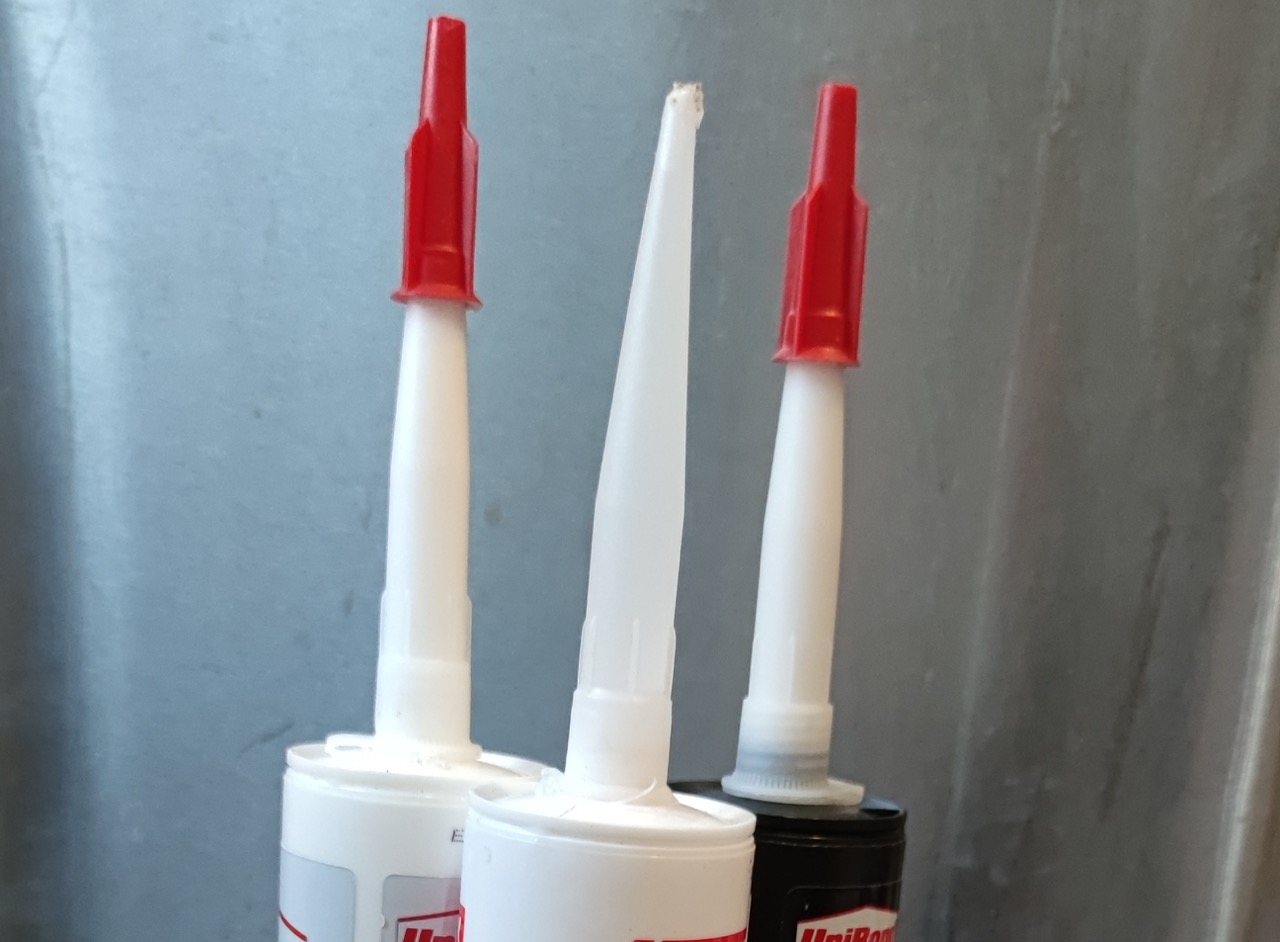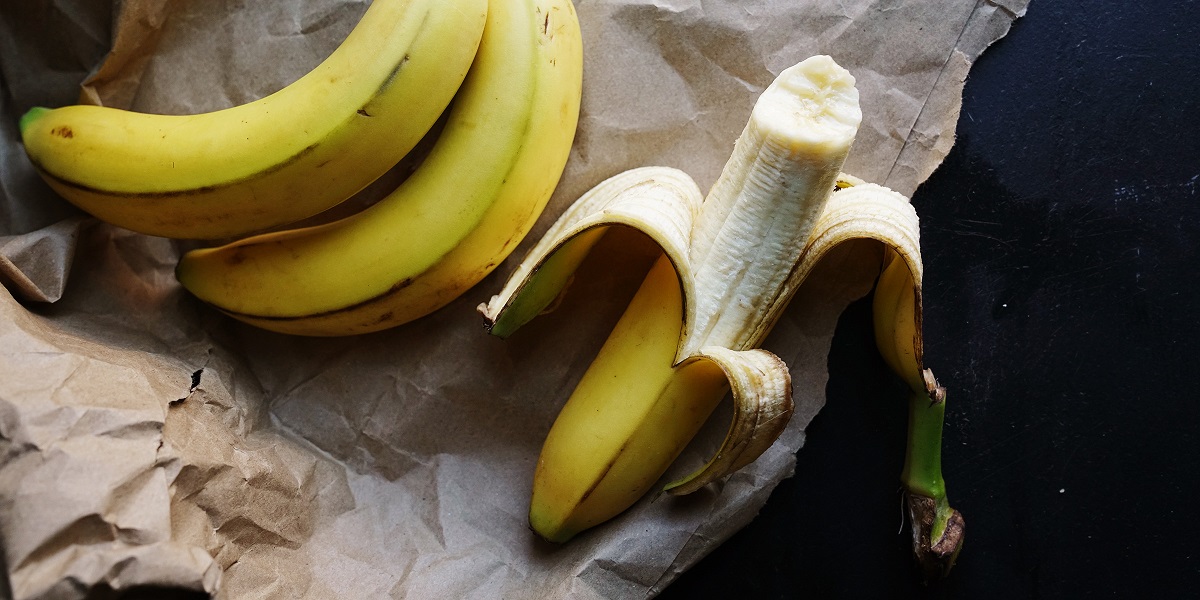

Articles
How To Store Open Sake
Modified: March 2, 2024
Discover the best practices for storing open sake with our informative articles. Learn how to preserve the flavor and quality of your sake for future enjoyment.
(Many of the links in this article redirect to a specific reviewed product. Your purchase of these products through affiliate links helps to generate commission for Storables.com, at no extra cost. Learn more)
Introduction
Welcome to this guide on how to store open sake. If you’re a fan of this traditional Japanese rice wine, you may have come across the dilemma of what to do with an unfinished bottle. Proper storage is crucial to maintain the flavor and quality of sake, ensuring that you can enjoy its unique taste even after it has been opened. In this article, we will explore the importance of storing open sake correctly and provide you with tips on how to do so.
Sake is a delicate beverage that can be greatly influenced by external factors such as temperature, humidity, exposure to light, and the sealing of the container. By understanding and implementing these storage practices, you can prolong the lifespan of your open sake and indulge in its rich aroma and complex flavors for an extended period of time.
Whether you’re a sake connoisseur or someone who enjoys an occasional glass, learning how to store open sake properly will enhance your drinking experience and ensure that every sip is as enjoyable as the first.
Key Takeaways:
- Proper storage of open sake is crucial to preserve its flavors and quality. Choosing the right container, controlling temperature and humidity, and avoiding light exposure are key factors in maintaining the integrity of sake.
- Open sake should be consumed within a few days to a week for optimal taste and freshness. Trust your senses to determine if the sake has gone bad, and implement proper storage practices to enhance your sake-drinking experience.
Read more: How To Store Sake After Opening
Why is Proper Storage Important?
Proper storage is vital for maintaining the quality and taste of open sake. Just like wine, sake can undergo changes when exposed to unfavorable conditions. Here are a few reasons why proper storage is important:
- Preservation of Flavor: Sake is a complex beverage with various flavor profiles, ranging from fruity and floral to earthy and rich. Proper storage helps preserve the delicate balance of flavors and aromas. Exposure to heat, light, and oxygen can lead to oxidation, resulting in a loss of freshness and a decline in taste.
- Prevention of Spoilage: Sake is a fermented product, and like any other alcoholic beverage, it is susceptible to spoilage. Incorrect storage methods can lead to the growth of bacteria or other microorganisms, causing the sake to spoil. By storing sake properly, you can ensure its safety for consumption.
- Extended Shelf Life: While sake doesn’t have an indefinite shelf life, proper storage can help extend its lifespan. By minimizing exposure to heat, light, and air, you can slow down the degradation process and enjoy your open sake for a longer period.
- Consistency of Quality: When sake is stored correctly, it maintains its quality and consistency. Each sip should provide a consistent taste experience, allowing you to appreciate the craftsmanship and nuances of the sake.
Proper storage is not only important for the preservation of the sake itself but also for the experience it provides. By storing it correctly, you can enjoy a well-preserved, flavorful, and satisfying glass of sake whenever you decide to pour yourself a glass.
Choosing the Right Container
When it comes to storing open sake, selecting the right container is essential to maintain its quality and prevent any contamination. Here are some considerations to keep in mind when choosing a container:
- Glass or Ceramic: It is recommended to store sake in glass or ceramic containers. These materials are nonporous and do not interact with the flavors or aromas of the sake. Avoid containers made of plastic or metal, as they can affect the taste of the sake.
- Airtight Seal: Ensure that the container has a tight-fitting lid or stopper to prevent air from entering. Exposure to air can oxidize the sake and cause it to lose its freshness. Look for containers with rubber gaskets or silicone seals to create an airtight barrier.
- Size: Choose a container size that matches the amount of sake you have left. A smaller container with less empty space will minimize air exposure. If you have multiple small bottles, consider consolidating them into a single larger container.
- Transparency: While glass containers allow you to see the sake, they can also expose it to light. Therefore, it is advisable to choose dark-colored glass or ceramic containers to protect the sake from light exposure.
- Wide Mouth vs. Narrow Neck: A wide-mouthed container allows for easier pouring and cleaning, but it also increases the surface area exposed to air. If you opt for a wide-mouthed container, try to transfer the sake quickly and minimize the time the container remains open.
Remember, the container you choose should prioritize functionality, ensuring a proper seal to maintain the quality and freshness of the sake. It should also be easy to handle and clean to provide a hassle-free storage experience.
Temperature and Humidity Considerations
Temperature and humidity play a crucial role in the storage of open sake, as they can significantly impact its flavor and overall quality. Here are some important considerations to keep in mind:
- Temperature: Sake should be stored at a consistent and cool temperature. The ideal temperature range for storing sake is between 45°F (7°C) to 55°F (13°C). Avoid extreme temperature fluctuations, as they can accelerate the aging process and affect the taste.
- Humidity: Sake is best stored in a place with moderate humidity levels. Aim for a humidity range between 50% to 70%. Excessive humidity can promote the growth of mold or mildew, while low humidity can dry out the sake and alter its taste.
- Avoid Temperature Extremes: Keep sake away from direct exposure to heat sources, such as sunlight, heaters, or stoves. High temperatures can speed up the oxidation process and degrade the quality of the sake. Similarly, avoid storing sake in areas prone to freezing temperatures, as it can affect the texture and flavor.
- Consistency: Maintain a consistent temperature and humidity level to ensure steady aging and preservation of flavors. Rapid changes in temperature or humidity can disrupt the balance of the sake and lead to undesirable changes.
When considering the storage location for your open sake, choose a cool and dark environment that is free from temperature fluctuations. A basement or a dedicated wine cellar can be an ideal option, as they offer the necessary temperature and humidity control. If you don’t have access to such spaces, a refrigerator can also serve as a suitable storage option as long as it is set to the proper temperature.
Always remember that sake is a delicate beverage and can be affected by its surroundings. By maintaining the right temperature and humidity levels, you can preserve the quality and integrity of your open sake and enjoy it at its best.
Avoiding Exposure to Light
When it comes to properly storing open sake, it is important to avoid exposure to light. Light, especially sunlight and fluorescent light, can have a detrimental effect on the quality and taste of sake. Here’s why:
- UV Radiation: Sake is susceptible to damage from ultraviolet (UV) radiation. UV rays can break down organic compounds in the sake, leading to unpleasant flavors and aromas. The result is a sake that tastes “skunky” or has a distinct off-putting smell.
- Oxidation: Exposure to light can also accelerate the oxidation process in sake. This can lead to a loss of freshness, altered flavors, and a decrease in overall quality. It is important to note that sake is more sensitive to light than other alcoholic beverages like wine or beer.
- Light and Temperature Connection: Light exposure is often accompanied by an increase in temperature, especially if sake is stored near a window or exposed to direct sunlight. The combination of light and heat can hasten the deterioration of sake and cause it to spoil more quickly.
To avoid light exposure, consider the following storage tips:
- Choose Dark-Colored Containers: Opt for dark-colored glass or ceramic containers. These materials provide better protection against light than transparent ones. Dark-colored containers help shield the sake from harmful UV rays, preventing light damage and maintaining its quality.
- Store in a Dark Area: Find a storage location away from direct sunlight or bright artificial light sources. A dedicated wine cellar, basement, or cupboard are good options for keeping your sake in a dark environment.
- Wrap the Container: If transparent containers are your only option, consider wrapping the sake container in a cloth or storing it in a wine tote bag to provide an additional layer of protection against light.
By minimizing exposure to light, you can preserve the freshness, flavors, and overall integrity of your open sake. Remember, sake is best enjoyed when it’s free from any light-induced changes that can compromise its taste and quality.
Store open sake in the refrigerator to maintain its flavor and quality. Use a tightly sealed container to prevent oxidation and store it for up to a week for best results.
Read more: How To Store Sake
Properly Sealing the Container
One of the key factors in storing open sake is ensuring that the container is properly sealed. A tight seal helps prevent air from entering and oxidizing the sake, maintaining its freshness and flavor. Here are some tips for properly sealing the container:
- Check the Lid or Stopper: Before storing the sake, inspect the lid or stopper of the container for any damage or wear. Ensure that it fits securely and creates a tight seal to prevent air from getting in. If the lid or stopper is loose or damaged, consider replacing it or using a different container.
- Use a Rubber Gasket or Silicone Seal: Look for containers that include a rubber gasket or silicone seal. These provide an extra layer of protection by creating an airtight barrier, preventing air from entering and causing oxidation. Make sure the gasket or seal is clean and free from mold or debris to maintain the integrity of the seal.
- Avoid Partially Filled Containers: When storing open sake, try to minimize the amount of empty space in the container. Oxidation occurs when sake comes into contact with air, so having less air in the container reduces the risk of oxidation. If needed, you can transfer the sake to a smaller bottle or use wine-preserving gadgets to remove excess air.
- Secure the Lid Properly: When closing the container, ensure that the lid is secure and tightly sealed. Pay attention to any clicking or locking mechanisms that indicate a proper seal. Make sure there are no gaps or openings that may allow air to enter the container.
- Store the Container Upright: It is recommended to store the sake container in an upright position to minimize the chances of any leakage or seepage that may occur from an improperly sealed lid or stopper. This will help maintain the integrity of the seal and prevent any spills.
By following these sealing techniques, you can prolong the freshness and flavor of your open sake. A properly sealed container will help create an optimal environment for the sake, allowing you to enjoy its distinctive taste and character every time you pour a glass.
Storing in a Cool and Dark Place
When it comes to storing open sake, finding the right environment is crucial. A cool and dark place provides the ideal conditions for preserving the quality and flavors of sake. Here’s why storing in a cool and dark place is important:
- Temperature Control: Sake is sensitive to temperature, and extreme heat or cold can impact its flavor and aroma. By storing sake in a cool place, typically between 45°F (7°C) to 55°F (13°C), you can slow down the aging process and maintain its freshness.
- Light Protection: Light exposure, particularly UV rays, can be detrimental to sake. Sunlight and fluorescent light can accelerate oxidation and lead to off-flavors. Storing sake in a dark place minimizes its exposure to light, preserving its quality and preventing any light-induced changes.
- Consistency and Stability: Fluctuating temperatures and light exposure can cause variations in the taste and stability of sake. By storing it in a consistent and controlled environment, you can ensure that the sake maintains its intended quality and flavor profile over time.
- Avoiding External Contaminants: Storing sake in a dark place helps protect it from external contaminants such as odors, dust, and other substances that can alter its taste. It also minimizes the risk of contact with potentially harmful bacteria or microorganisms.
When choosing a storage location for your open sake, consider the following tips:
- Away from Sunlight: Find a spot away from direct sunlight or any strong light sources. Sunlight can not only cause light damage but also increase the temperature of the surrounding area, negatively affecting the sake.
- Cellars or Basements: If available, a basement or cellar can be an ideal storage spot for sake. The underground nature of these spaces provides consistent temperature and a dark environment that is suitable for long-term storage.
- Cupboards or Closets: If you don’t have access to a cellar, cupboards or closets can also work well, especially if they are located away from windows or any heat sources. Ensure proper ventilation to prevent any potential moisture buildup.
- Refrigeration as an Option: If you live in a warm climate or lack a suitable storage place, consider storing your sake in the refrigerator. Just make sure the temperature is set to the appropriate range, and the sake is well-sealed to prevent any odors from transferring.
By storing your open sake in a cool and dark place, you’ll preserve its freshness, flavors, and overall quality. This will ensure that each pour brings you closer to experiencing the true essence of this beloved Japanese beverage.
Shelf Life of Open Sake
As with any alcoholic beverage, the shelf life of open sake can vary depending on how it is stored and the specific characteristics of the sake itself. However, in general, open sake should be consumed within a reasonable time frame to enjoy its optimal flavors and quality. Here are some factors that can affect the shelf life of open sake:
- Exposure to Air: Sake reacts to exposure to air, specifically oxygen. Once the bottle is opened, the sake begins to oxidize, which can lead to changes in flavor and aroma. While properly sealed containers can slow down this process, it is still recommended to consume open sake within a few days to a week for best results.
- Storage Conditions: The way sake is stored greatly influences its shelf life. Storing open sake in a cool and dark place, away from heat, light, and fluctuating temperatures, can help maintain its freshness and flavors for a longer period. Conversely, improper storage conditions can accelerate spoilage and affect the taste of the sake.
- Sake Type: Different types of sake have varying characteristics and aging potential. Some sakes, such as unpasteurized or nama sake, have a shorter shelf life and are best consumed within a shorter period after opening. Others, such as aged or vintage sakes, may have a longer shelf life due to their complexity and robust flavors.
- Quality of Sake: The quality of the sake itself plays a role in its shelf life. Higher quality sakes, with superior fermentation and brewing processes, tend to have a longer shelf life and can maintain their flavors and quality for a longer period compared to lower quality varieties.
It is important to remember that the shelf life mentioned here is a general guideline, and individual factors can impact the specific timeline. Ultimately, it is up to your own taste preference and judgment to determine if the sake is still enjoyable to drink. Smell and taste are key indicators of sake spoilage, so trust your senses when assessing the quality of your open sake.
To make the most of your open sake and ensure an enjoyable drinking experience, it’s recommended to consume it within a few days to a week of opening, taking care to store it properly. Embrace the freshness and distinct flavors of sake while it is at its best!
Frequently Asked Questions
Here are some commonly asked questions about storing open sake:
- Can I store open sake at room temperature?
- Can I store open sake in the refrigerator?
- How long does open sake last in the refrigerator?
- Can I store open sake in the freezer?
- Should I shake the sake bottle before storing it?
- Can sake go bad?
- How can I tell if the sake has gone bad?
While it is possible to store open sake at room temperature, it is not ideal. Room temperature can vary, and higher temperatures can accelerate the degradation process. It is recommended to store open sake in a cool and dark place with a consistent temperature.
Yes, you can store open sake in the refrigerator. However, make sure to seal the container properly to prevent any odors from transferring. Set the refrigerator temperature to the range of 45°F (7°C) to 55°F (13°C) for optimal storage.
In the refrigerator, open sake can last for about a week, provided it is properly sealed. However, for the best quality and flavors, it is recommended to consume it within a few days of opening.
Storing sake in the freezer is generally not recommended. Freezing temperatures can negatively affect the texture and taste of sake, compromising its quality and flavor profile.
No, you should avoid shaking the sake bottle before storing it. Shaking can introduce air bubbles and disturb the sake’s flavors. Instead, gently rotate the bottle to move the sediments if any are present.
Sake does not spoil in the same way as perishable food, but it can degrade over time. Exposure to air, heat, and light can compromise its quality and result in off-flavors. It is best to consume sake within a reasonable time frame and store it properly to maintain its freshness.
Spoiled sake may have a distinct off odor, a sour or vinegar-like taste, or a cloudy appearance. If you notice any of these signs, it is best to discard the sake.
If you have any additional questions or concerns about storing open sake, it is always a good idea to consult with a sake expert or refer to the specific recommendations provided by the sake brewery or producer.
Read more: How To Store Opened Yogurt
Conclusion
Proper storage of open sake is essential to maintain its flavors, quality, and overall enjoyment. By following the tips and guidelines outlined in this article, you can ensure that your open sake stays fresh and delicious for as long as possible.
Choosing the right container, properly sealing it, and storing it in a cool and dark place are key factors in preserving the integrity of the sake. Avoiding exposure to light and controlling temperature and humidity levels are also important considerations to keep in mind.
Remember, open sake is best consumed within a few days to a week for optimal taste and freshness. Be aware of the type and quality of sake you have, as different varieties may have different shelf lives. Always trust your senses to determine if the sake has gone bad.
Whether you’re a sake connoisseur or simply someone who enjoys a glass on occasion, implementing proper storage practices will enhance your sake-drinking experience. By protecting the flavor and quality of your open sake, you can savor its unique taste and aromas with every pour.
So take care of your open sake, create the ideal storage environment, and indulge in this delightful beverage whenever the occasion calls for it. Cheers!
Frequently Asked Questions about How To Store Open Sake
Was this page helpful?
At Storables.com, we guarantee accurate and reliable information. Our content, validated by Expert Board Contributors, is crafted following stringent Editorial Policies. We're committed to providing you with well-researched, expert-backed insights for all your informational needs.














0 thoughts on “How To Store Open Sake”